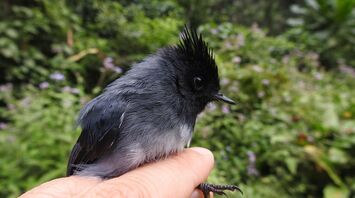With climate warming, birds are becoming larger: researchers are studying size changes in birds in mountainous regions

As global temperatures rise, animals, especially birds, are shrinking in size. Many ecologists believe that this trend may be a universal rule of climate change.
However, a new study led by the University of California in the Usambara Mountains in Tanzania, one of the world's tropical biodiversity hotspots, proves that this trend is not absolute and shows that birds in the region have increased in size by an average of 4.1% over the past 36 years as temperatures have risen," writes NewsRoom.
"Our study is one of the first to identify an upward trend in body weight and to find that it is so widespread across the community," says University of California ecologist Monte Neath-Clegg, lead author of the paper. - "This is the first time it's been found in the tropics and possibly around the world.
The researchers measured the bodies of 42 bird species in the region, including the dark-backed weaver, forest whip, and square dodo, and found that all 42 species showed a positive trend toward increased body weight. Smaller species had proportionally greater increases in size, but trends between species did not show that these changes were related to bird survival.
It is not known what is causing these unusual changes. One possibility is that as temperatures rise, plants are experiencing a longer growing season, providing birds with more food and other resources. Another possibility is that shrinking species populations are giving them larger territories, again providing them with more resources.
Most studies of ecology and climate change in the tropics have focused on lowland areas, particularly in the Amazon basin. Much less is known about how climate change affects mountainous tropical regions. The area studied in this article is located at an altitude of about 3,000 feet above sea level, where temperatures are cooler and the terrain is more varied.
More research needs to be done to understand how climate change is affecting birds in such mountainous regions, says Neath-Clegg, who is part of a team of UCLA ecologists studying the impact of environmental stressors on bird species in the region.
"This study cautions against making hasty assumptions about the mechanisms of climate change impacts on birds," he said. "It points to the importance of understanding how birds are affected by things like food, rather than things like direct heat tolerance."
Knowing how climate change affects species is critical to conservation efforts. Understanding the factors contributing to population declines, such as heat, food, habitat availability, and other causes, may allow for the development of tailored approaches that will be more effective in protecting birds in the Usambara Mountains and beyond.



















